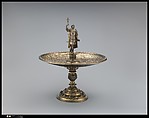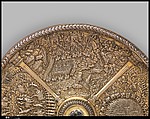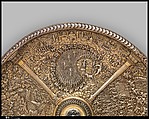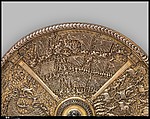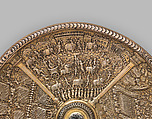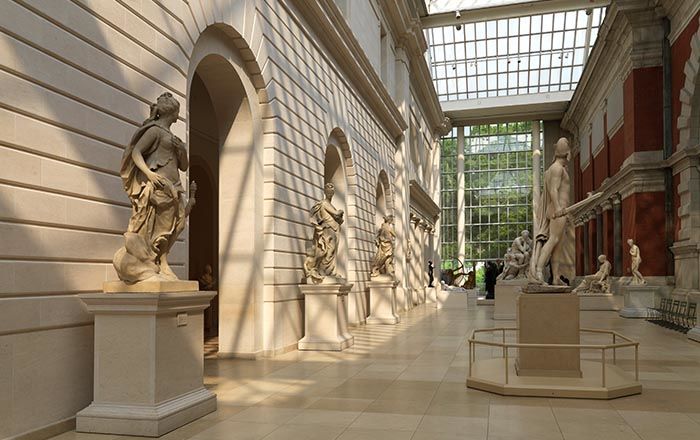Returned to lender The Met accepts temporary loans of art both for short-term exhibitions and for long-term display in its galleries.
Julius Caesar tazza
Not on view
On each tazza, the ruler looks down at a positive version of his life and the adoration of his people. The images are oriented inward toward the ruler’s statuette, which stands on a pedestal at the center of the dish. This arrangement makes the scenes difficult for us to see, accommodating the emperor’s imaginary gaze rather than that of the flesh- and-blood observer. These four episodes from the biography of Julius Caesar bristle with tightly packed energy.
Scene one
1
Julius Caesar goes beyond the bounds of the Roman world to invade Britain (55 B.C.)
2
His fleet is nearly destroyed by a violent storm off the coast
Scene two
1
Julius Caesar halts his army at the river Rubicon, unsure whether to cross. To do so would mean civil war with Pompey and his enemies in Rome
2
A giant appears, playing a pipe. Soldiers and shepherds listen
3
The giant grabs a trumpet from one of the soldiers, blows a battle cry, and strides across the river. Julius Caesar recognizes the giant as an omen from the gods and decides to lead his men across the river and into battle
Scene three
Julius Caesar wages a civil war against Pompey for control of Rome. After almost four months of fighting, he finally defeats his enemy at the Battle of Pharsalus (48 B.C.)
Scene four
1
Julius Caesar rides in a chariot during his triumph, a Roman procession celebrating his victories (46 B.C.)
2
Forty elephants carrying torches light the way
This image cannot be enlarged, viewed at full screen, or downloaded.
This artwork is meant to be viewed from right to left. Scroll left to view more.
